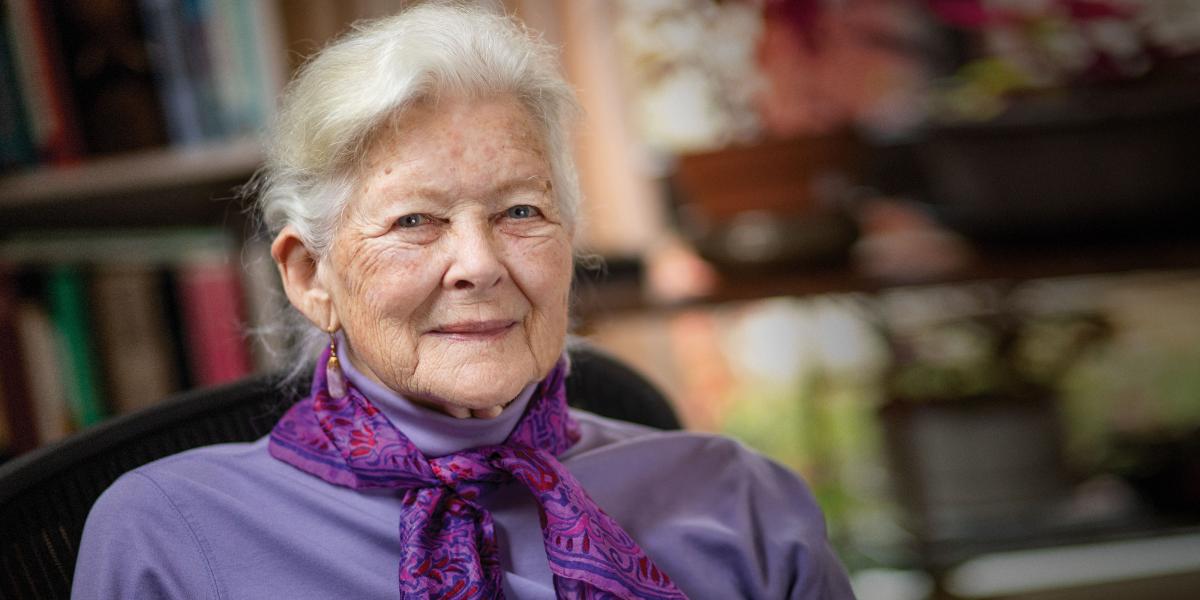“The Mother of Injury Prevention” Sue Baker Launches Safety by Design
After a career of making the world a less dangerous place, Baker’s new initiative aims to keep it that way.
Sue Baker sees danger everywhere.
Not that she seems particularly anxious about it. Sitting down to lunch on a rainy October day in the retirement community north of Baltimore where she lives, the 89-year-old Baker—a professor emerita at the Bloomberg School who is known as the mother of injury prevention—is a charming and gracious host, her conversation peppered with mordant humor and self-deprecating wit.
But make no mistake. Behind the smiling blue eyes and wavy silver hair lurks a mind that is constantly alert to the possibility of serious injury and death.
Just ask her, for instance, what she thinks of the injury-prevention measures in place at her current residence.
“Pretty good,” she says coolly, setting her sandwich aside and looking into the middle distance like a lioness preparing to pounce.
What follows is an incisive disquisition on the safety features and weaknesses of the sprawling campus, which abuts a busy intersection on an inclined roadway. Plans were laid to incorporate a traffic light, and the community’s CEO asked Baker, MPH ’68, to consult with the traffic engineers in charge of the project. When Baker learned that the light would stop only uphill traffic because drivers would find it too difficult to stop on the downhill grade, she immediately protested.
“If they can’t stop for a traffic light, how will they be able to stop for a kid on a bike?” she asks, her voice sharpening at the thought that someone might be injured or killed when a solution lay close at hand.
It’s Baker’s classic M.O.: Start with detailed observation and analysis of a common source of injuries and fatalities (e.g., car crashes, housefires, shootings). Make recommendations for preventing harm (e.g., child car seats, sprinkler systems, gun regulations). Advocate vigorously for said recommendations.
This is how Sue Baker thinks, and this is what Sue Baker does. And while she herself now needs a walker to get around safely, she is not about to stop.
When Baker began her coursework in 1966, injury prevention as we know it today did not exist.
The Occupational Health and Safety Act, for example, was barely a glimmer in legislators’ eyes; the Highway Safety Act had just been passed; and early injury prevention experts such as William Haddon Jr., MD, were only beginning to apply the principles of public health to high-profile problems such as traffic safety.
Over the course of several decades, Baker would help define injury prevention as a scientific discipline concerned with preventing all manner of intentional and unintentional injuries and ameliorating their consequences. As injury prevention acquired the status of such public health mainstays as disease control, the ensuing reductions in injury rates were often striking: After childproof packaging was required on all drugs and medications in 1973, the number of childhood poisonings fell by 50%. The rate of motor-vehicle fatalities, meanwhile, fell by more than 43% between 1968 and 2017.
Looking back, however, Baker may not have seemed like the most obvious candidate for public health pioneer. Her late husband, Tim, who passed away in 2013, was a School alumnus and a beloved former faculty member and assistant dean. But Baker herself entered the field sideways, landing a part-time job as a computer programmer in the Department of Chronic Diseases in 1965 after overhearing department chair Abe Lilienfeld, MD, MPH ’49, mention during a faculty party that he was looking to hire someone.
Baker didn’t know anything about computer programming, but she was good at math, and she learned fast. Coding epidemiological data on diabetes and heart disease whetted her appetite for public health, and she soon became the first person admitted to the MPH program without a graduate degree in health science.
Her introduction to injury prevention was similarly oblique.
As an MPH student, Baker convinced Lilienfeld that she’d learned enough about chronic diseases to skip a required course on the subject and write an independent research paper instead. She chose to study fatal crashes, comparing drivers responsible for the crashes with drivers not at fault, looking for autopsy evidence of chronic disease. (Spoiler alert: the only correlations between driver responsibility and chronic disease involved alcohol-related ailments.) To do that, however, she needed access to their autopsy reports.
Fortunately, one of her professors, Werner Spitz, was the deputy chief medical examiner for the State of Maryland, and he agreed to let her come in and examine the reports.
Baker set up shop in the same room where the pathology residents changed into their scrubs and dictated their autopsy notes. For someone with her epidemiological intuition and wide-ranging curiosity, it was like being the sole prospector in a gold mine. Long after her initial research project was over, Baker remained the epidemiologist in residence at the medical examiner's office, poring over case files, observing autopsies, and producing one groundbreaking study after another.
From the start, Baker was committed to acquiring firsthand knowledge of whatever problem attracted her attention. To better understand injuries to truck drivers, she drove an 18-wheeler at the GM proving grounds in Phoenix. While researching plane crashes, she earned her pilot’s license. To further her investigations into recreational injuries in occupational settings, she spent a week on a U.S. Navy aircraft carrier.
“It made her research more authentic, and that was important to her—and to the field,” says Carol Runyan, PhD, MPH, a professor emerita at the UNC Gillings School of Public Health, who completed a postdoctoral fellowship under Baker in 1986. “She didn’t just talk about stuff; she knew what she was talking about.”
She also had an uncanny ability to recognize patterns in data and intuit their significance.
While reading through cases of fatally injured drivers in the medical examiner's office, for instance, Baker realized that four in a row were decorated with tattoos. Intrigued, she wrote a study demonstrating that tattooed drivers who were killed in crashes were more likely to be responsible for their deaths than non-tattooed ones, a fact that could be explained by the correlation between tattoos and alcohol consumption. In subsequent studies, Baker challenged conventional wisdom on everything from the leading cause of childhood choking (hot dogs, not balloons) to falls among the institutionalized elderly (hip fractures result from falls, not vice versa).
But Baker didn’t just figure out what was killing people. She also made specific recommendations—in her scholarly papers, in public testimony, in newspaper and magazine articles (she may well be the only public health expert ever profiled in People magazine)—for saving lives.
“She’s the full package,” says Professor Emeritus Stephen P. Teret, JD, MPH ’79, who worked with Baker for many years after taking her injury prevention course in his first semester at the School. “She goes from the initial discovery of a problem to formulating policies and then advocating for their enactment. There are very few people who do that, and there are very few people who can do that, because it requires very different skillsets.”
In the early decades of Baker’s career, it also required courage—or at the very least, incredibly thick skin.
At the time, many public health researchers considered science and advocacy mutually exclusive. And Baker was a lone female pioneer in a discipline that was not yet widely recognized as integral to the field. Describing her research to a fellow faculty member at the School, she was asked, “But is that public health?” Introducing herself to a few of the 200 men who attended the first meeting of the American Trauma Society in Philadelphia, she was asked, “Where is your husband?”
Undeterred, Baker lobbied relentlessly for injury prevention policies, going up against the auto industry by campaigning for mandatory airbags and earning the ire of motorcyclists (Road Rider magazine named her “Bad Guy of the Month” in the 1970s) by arguing that crash helmets should be compulsory. Combining hard evidence with passion, charisma, and good old-fashioned chutzpah—she once brandished a steering wheel at a group of federal officials while offering public testimony on truck design—she created a template for those who would use their research to drive change for the greater good.
“There are people who work in public health who think that if they stand in front of a legislative committee with a steering wheel, they’ll sully their reputations as scientists,” says Teret. “Sue has proven those people to be wrong: You can be a leading scientist, and also be an advocate for your scientific findings.”
At one autopsy, for example, Baker witnessed a “sea of blood” pour from the abdomen of a car-crash victim. Reading the case notes, she realized that the person had died for lack of a trauma surgeon in a rural emergency room, so she enlisted a pair of surgeons to write a paper with her on vehicular fatalities and abdominal trauma.
-
1968
Becomes the first member of the School’s faculty to specialize in “accident prevention” (soon to be renamed injury control)
-
1972
Publishes paper on vehicular fatalities and abdominal injuries, helping to prompt creation of statewide trauma systems
-
1974
Publishes paper in Journal of Trauma on the Injury Severity Score
-
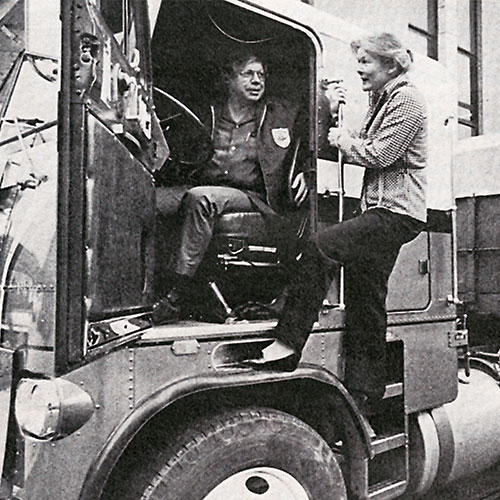
c. 1977
Talking to a Maryland truck driver after she drove an 18-wheeler at GM proving ground in Phoenix
-
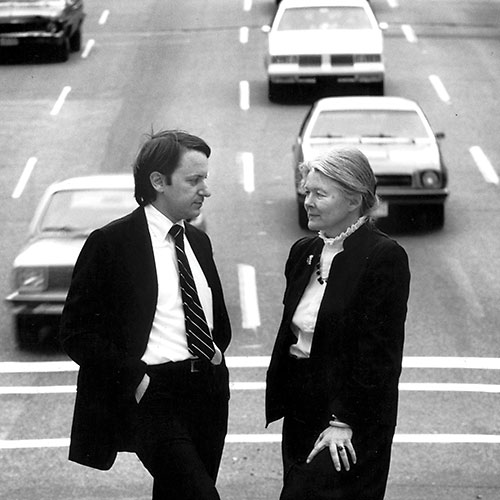
c. 1978
With Steve Teret, who later became the second director of the Center for Injury Research and Prevention
-
1979
Publishes paper in Pediatrics on motor vehicle deaths in young children, helping to drive adoption of child car seat laws
-
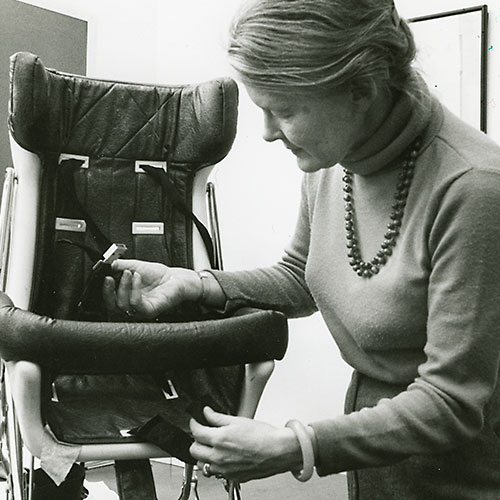
c. 1984
Demonstrating an early child safety seat
-
1984
Co-authors The Injury Fact Book, the first comprehensive statistical review and analysis of injuries in the U.S.
-
1985
Contributes to National Academy of Sciences report Injury in America, which leads to creation of National Center for Injury Prevention and Control
-

c. 1985
Studying playground safety, on site
-
1987
Founding director of the Center for Injury Research and Prevention
-
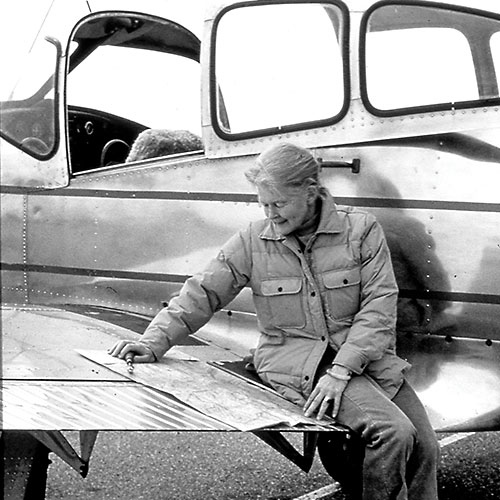
1988
Flew to crash sites in Colorado to get data for her first aviation study
-
1989
Begins to publish series of papers on aviation crashes that draw on own her experience as licensed pilot
-
2018
Launches Safety by Design initiative
-
2019
Introduces Killer Design course with colleagues from the schools of Public Health, Medicine, and Engineering
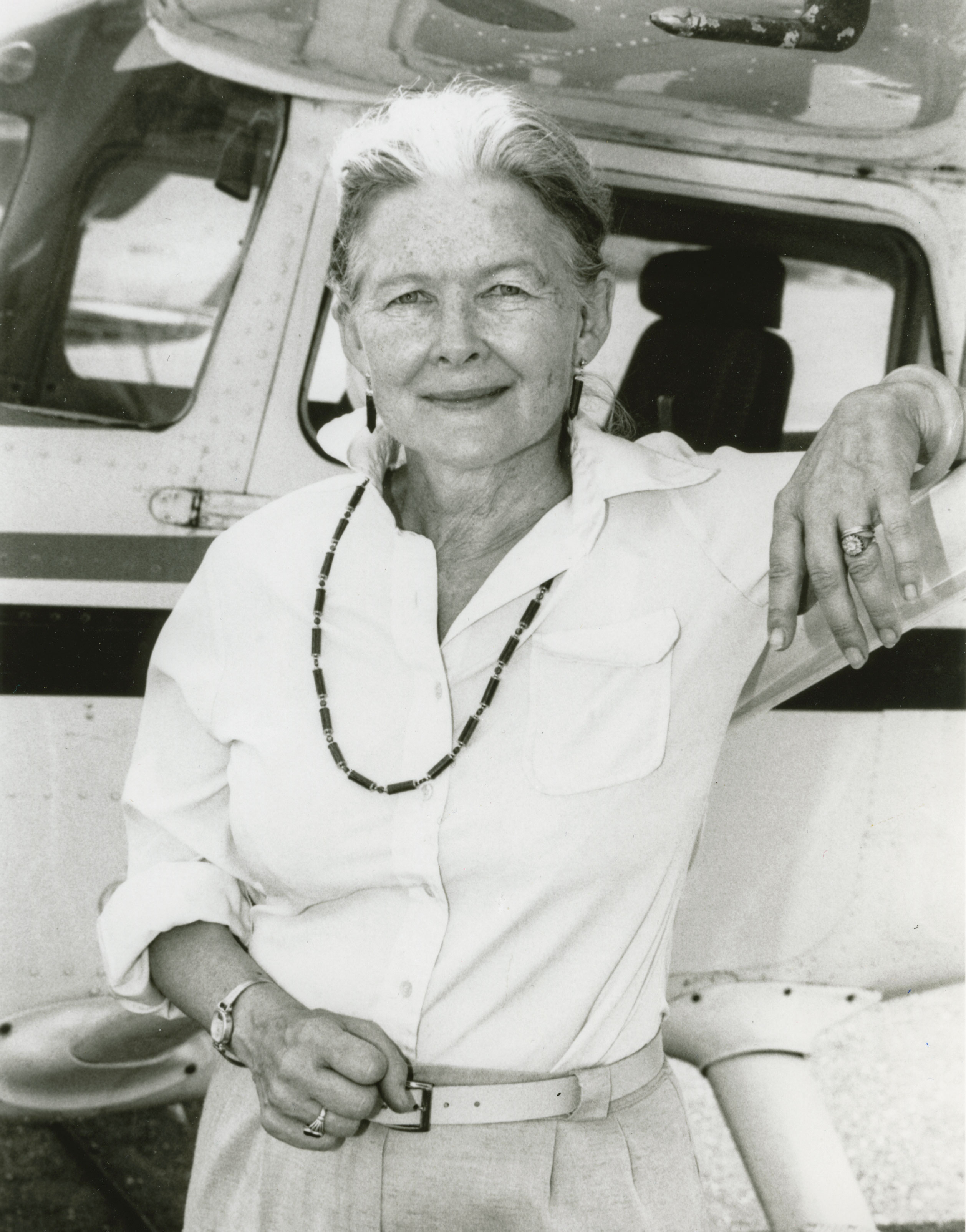
Together they showed that half the cases studied might have been prevented through swift and appropriate treatment, and recommended that injured patients be transported to facilities that were prepared to handle major trauma. Their work spurred Maryland to develop the first statewide system for directing trauma victims to hospitals that were staffed and equipped to care for them, prompting similar efforts elsewhere.
It wasn’t an altogether smooth process: When Baker first presented her findings to the Association for the Advancement of Automotive Medicine, a past president, angered that a non-physician had exposed deficiencies in trauma care, stood up and accused her of “opening Pandora’s box.”
Baker’s reply: “Do you want to just close the lid and sit on it?”
“To this day, she is revered by trauma surgeons. She’s like a saint to them,” says Dean Ellen J. MacKenzie, PhD ’79, ScM ’75, who credits Baker with inspiring her to address the short- and long-term consequences of traumatic injury. In the early 1970s, Baker developed the Injury Severity Score, a tool for predicting the likelihood of death given various combinations of injuries—work that motivated MacKenzie to develop methods for predicting and optimizing nonfatal outcomes, such as disability.
Baker’s time in the medical examiner's office also led her to suspect that babies suffered higher death rates in car crashes than older children. Working with data compiled by the National Center for Health Statistics, she demonstrated that infants died in motor vehicle crashes at twice the rate of one-year-olds and triple the rate of children ages 6 to 12, in part because their mothers tended to hold them in their laps and in part because their fragile bodies were more vulnerable to serious injury.
Baker concluded that paper with a plea to focus greater attention on protecting infants from injury and death resulting from motor vehicle crashes. State by state, safety advocates used her work to push for child car seat laws.
One of them was Andrea Gielen, ScD ’89, ScM ’79, who now directs the Center for Injury Research and Policy (CIRP), which Baker founded in 1987. After completing her master’s degree in behavioral science, Gielen joined the Maryland State Health Department to work on a child passenger safety program. The first thing she did was turn to Baker for evidence that infant seats could save lives.
“She was the first one to show that kids from birth to 6 months of age were at the highest risk for motor vehicle crash deaths,” Gielen says. “That was real fuel for our efforts to generate interest among the public, pediatricians, and law enforcement that protecting babies in cars was a worthy thing to do.”
Thanks in no small part to Baker’s research, child car-safety restraints were made mandatory in Maryland in 1983. Today they are required in all 50 states, reducing the risk for death to infants in car crashes by 71%.
But Baker’s contributions extend beyond the ramifications of her findings, or her application of rigorous epidemiological methods to injury prevention, or her insistence that evidence-based advocacy is a legitimate activity for a public health researcher. They also encompass her unceasing efforts to grow and develop the injury prevention community.
As one of the main authors of a 1987 report that called on Congress to create a federal injury prevention agency, Baker played a central role in the establishment of the CDC’s National Center for Injury Prevention and Control—and of the nine Injury Control Research Centers it now helps fund. CIRP was among the first of these, and it remains one of the largest injury research and educational programs in the world, working to improve occupational, home, and transportation safety and to address violence and substance abuse.
And it wasn’t just institutions that Baker helped to establish. As a mentor and teacher to multiple generations of injury prevention experts, she literally built the field from the ground up.
“She’s like the Johnny Appleseed of the science,” says Teret. “She planted the seeds of injury prevention in the minds of so many people.”
Such praise makes Baker uncomfortable. Sitting in her living room after lunch, watching the rain come down outside her window, she would much rather talk about the new Safety by Design initiative, which she hopes will keep even more people from harm.
Rooted in CIRP, the initiative will draw on the combined resources of the schools of Public Health, Engineering, and Medicine, as well as the Department of Design and Environmental Analysis at Cornell, her undergraduate alma mater. Among other things, Baker plans to use the initiative to introduce interdisciplinary courses and projects, promote research on safety and design, and hold an annual colloquium to discuss the findings.
To get the ball rolling, Baker and colleagues from the schools of Medicine and Engineering introduced a new course this past spring. Killer Design had students analyze the risks posed by items ranging from snowblowers (amputation) to Venetian blinds (strangulation) and invited them to redesign them to be nonhazardous.
“At this point, my real passion is to get people who are designing anything manmade, whether it’s a curbstone or a chandelier, to think early on in the game, ‘I want to be sure this doesn’t hurt anybody,’” Baker says, the fire returning to her voice. “Safety is something you should be thinking about from the beginning, rather than after people have been hurt.”
Then her face softens in a wry grin. “I just want to change the way designers think. I don’t want much, do I? Change the world, Baker, why not, while you’re at it?”
Why not, indeed? After all, she’s done it before.
